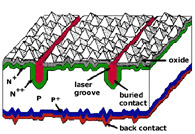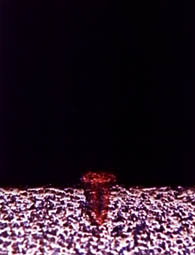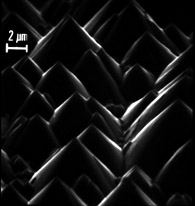
Buried contact solar cell
1991
high-efficiency photovoltaic cell
Professor Martin Green and his team of researchers at the University of NSW are world leaders in designing solar cells, which convert sunlight into electricity. They aim to make solar cells as efficient as possible and at an affordable price - so more people will use them.
The team has developed a silicon solar cell with tiny, laser-etched grooves in which the wires (contacts) that carry the electric current are buried. This leaves a greater surface area to catch the sun's rays and has led to a record 24.7% efficiency for an experimental cell (and 20% efficiency for cells made commercially). Their buried-contact solar cells powered the car that won the 1990 Solar Challenge car race from Darwin to Adelaide.
In 1994 they prototyped cells made from cheaper, lower quality thin films of silicon that are still 16% efficient. Cells like these could begin to replace traditional ways of generating electricity on a large scale. In 1995 Pacific Solar was formed between Pacific Power and Unisearch (UNSW?s technology commercialisation arm) to commercially manufacture these cheaper solar cells. Pilot production of the cells began in 1998 and by the end of the century plans were underway to fully commercialise the technology.
UNSW buried contact solar cells are being manufactured under licence in Spain and Switzerland. In 1999 Martin Green and Stuart Wenham won the Australia Prize for excellence in the field of energy science and technology.
Who Did It?
Key Organisations
University of New South Wales : R&D
Unisearch Ltd : patenting & licensing
BP Solar : initial manufacture
Key People
Martin Green : research team leader
Stuart Wenham : researcher
Michael Willison : researcher
Further Reading
Making it: innovation and success in Australia's industries
R Renew
Powerhouse Publishing, Sydney, 1993, pp 88-89.
Links
Centre for Photovoltaic Engineering
UNSW
Unisearch Pty Ltd
BP Solar
Pacific Solar
Sustainable Energy Development
Authority
1999
Australia Prize
How solar cells work
Questions & Activities
Buried contact solar cell
|














